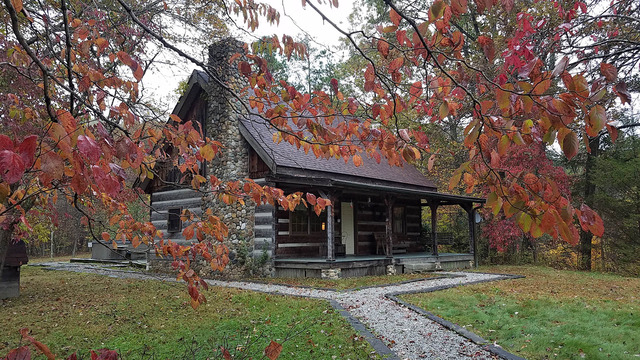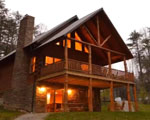LAKE WHITE STATE PARK
Picturesque Lake White is nestled between the ridges of southern Ohio's rugged hills. Water sports enthusiasts can enjoy swimming, boating, water skiing and fishing at this scenic park.
Located in the Appalachian foothills near the Scioto River, Lake White State Park supports a variety of natural wonders. The forested hills are similar in character to the southern Appalachians with magnificent stands of oak, hickory, tulip, ash, maple and scores of other hardwood species. In spring, the forest trails are lined with flowering dogwood and redbud trees and numerous woodland wildflowers. The sandstone outcroppings are coated with various ferns, mosses, lichens and fungi including the prized morel mushrooms in spring.
The dense forest and remoteness of the area create excellent habitat for some of Ohio's most elusive wildlife. White-tailed deer, ruffed grouse and the secretive wild turkey are abundant in this region. Red fox, skunk, opossum, gray squirrel and raccoons are often sighted. Many reptiles and amphibians find the park's cool waters desirable.
The cultural history of this area dates back to the Adena and Hopewell Indians who settled in the Scioto Valley around 800 B.C. These mound building tribes left behind extensive earthworks throughout the Scioto Valley region. Adena, near Chillicothe, was the site of the first mound excavation attributed to these prehistoric people. Other mounds in the area include Seip Mound, Spruce Hill, Fort Hill and Serpent Mound.
The Scioto River played an important role in the early history of this area. Indian and frontiersmen alike paddled the stream from the Ohio River to the heart of the new frontier. The Shawnee used the river as their primary means of transportation from one village to another. The river also brought the first European settlers to the area in the 1790s. Many of these first Ohioans were veterans of the Revolutionary War claiming land due them for military service.
The construction of the Ohio and Erie Canal heightened the hopes of those along its path that were destined to prosper from canal traffic. Initial plans placed the canal through Piketon, bypassing Waverly. This aggravated an intense rivalry between Piketon and Waverly citizens. After persistent lobbying by Waverly promoters, the canal route was changed and Piketon was bypassed. The Waverly cause was aided greatly by Ohio Speaker of the House, at that time, Robert Lucas, who owned land near Waverly and stood to gain greatly by the new route.
In 1832, the canal was opened. It was announced that the water would reach Waverly on the morning of September 6, and preparations were made to welcome its arrival. The canal banks were packed with residents for a great distance, but the water never arrived. Unfortunately, it had hit an expansive gravel deposit which absorbed most of the water. Eventually the gravelly areas became saturated and the water reached Waverly by noon much to the delight of cheering crowds.
The prosperity of the canal era was short lived. With the advent of rail transportation, goods could be shipped more efficiently throughout the country. As early as 1860, use of the canals had dropped dramatically. In 1913, the Ohio and Erie Canal was officially closed.
Part of Lake White State Park includes the remains of the old canal channel. The lake was built during the depression by the Works Progress Administration (W.P.A.). Most of the land surrounding the lake is privately owned. Lake White was officially dedicated as a state park in 1949 when the Division of Parks and Recreation was created.
Ohio does not have an annual pass and does not charge entrance fees to state parks.
GeneralLand, acres92
Water, acres337
Nearby State Forest, acres21,000
Day-UseFishingyes
Picnickingyes
Picnic Shelters, #2
BoatingBoating LimitsUnlimited HP
Launch Ramps, #1
WinterSleddingyes
Ice Skatingyes
Ice Fishingyes




